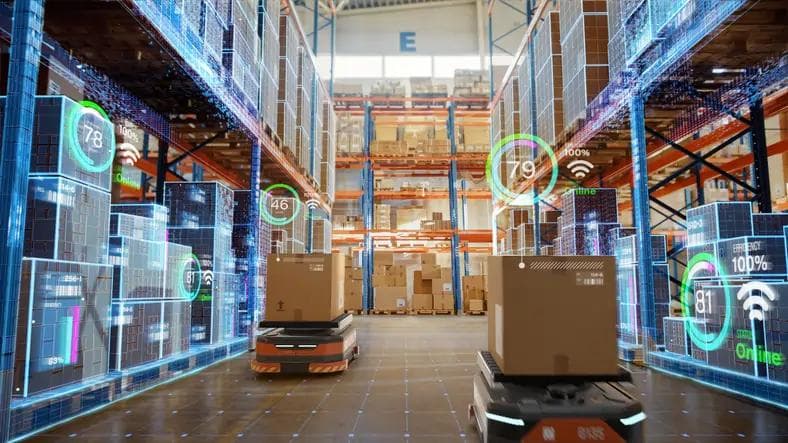The future of global e-commerce and understanding the buyer’s journey
The future of global e-commerce and understanding the buyer’s journey
Published by Jessica Weisman-Pitts
Posted on March 14, 2022

Published by Jessica Weisman-Pitts
Posted on March 14, 2022

Joris Kroese is the founder and CEO of global omnichannel commerce solutions provider, Hatch. Having begun his career within the ecommerce sector in 2001, he has spent over two decades honing his industry expertise. Here, Kroese discusses the future of global ecommerce and the importance of understanding the buyer’s journey.
We talk a lot about the future of global ecommerce. What is often forgotten in these conversations is the crucial role of the customer in shaping how ecommerce ticks. Consumer habits make and break ecommerce, and consequently, the future of the market hinges on how our consumers like to shop. This is why it is so important to accept that, in understanding the buyer’s journey, we cannot in fact predict every customer’s path to purchase. In ecommerce today, with a market-driven by innovation and growing omnichannel expertise, the buyer’s journey is inherently unpredictable. The future of ecommerce, therefore, lies in accepting this very fact. Understanding the consumer means understanding that every customer has their own set of expectations, habits, and shopper preferences. The best thing brands can do is embrace unpredictability by fostering a multi-faceted approach to ecommerce.
If the pandemic taught us anything, it’s that ecommerce brands can expect the market to change drastically at any time. Two years ago, social commerce exemplified this, catapulting itself to the forefront of ecommerce as more people than ever turned to digital ways of shopping. What we’ve also learned is that this trend was not just for the pandemic: the power of social commerce hasn’t disappeared, and we can expect it to continue to feature in the global future of ecommerce that lies ahead of us. Ecommerce innovations that make shopping easier, quicker, and more seamless for the customer are exactly what we can expect to come.
To take a look into the future of global ecommerce, we often have to look at the regions striving towards great market innovation. Asia-Pacific, and particularly Southeast Asia is one such example. Digital transformation moves at a rapid pace in the region, with brands adapting to consumer habits faster than anywhere else in the world. According to Accenture, the region accounts for almost two-thirds of the global digital commerce market today, steadily propelling ecommerce forwards. Projections by EMarketer indicate that ecommerce sales in Southeast Asia will reach nearly $USD90 billion this year, with almost 65 percent of the region’s sales coming from Indonesia, while the Philippines will lead the region in growth for the next several years. Meanwhile, in Thailand, over 96 percent of internet users access the internet via mobile phones, averaging 5 hours daily usage. With mobile internet and social media at such a saturation level in the region, we can be sure that ecommerce brands will continue to adopt the necessary tools to attract consumers increasingly discovering brands on their phones rather than in physical stores. Just like how social commerce emerged as a convenient method of shopping for social media users, other digital innovations that meet consumer habits will continue to dominate the market in the years to come. While still in its early stages in Southeast Asia, there is great potential for Artificial Intelligence to make its mark on retail and ecommerce, and other regions are likely to follow suit.
While customer-centric innovation is a key characteristic of the future of ecommerce, global trends may continue to look a little different according to region. As previously mentioned, the customer journey is not a preconceived path. Consumer needs often depend on the environment of the market region. Despite the advancement of the market in APAC for example, trends that are characterising ecommerce growth in Europe and North America don’t necessarily look the same across the board. Click-and-collect, for example, is hugely popular in European countries including Germany and the United Kingdom, but less so across much of APAC. According to Sensormatic Solutions, this can be largely attributed to highly densely populated cities that pave the way for the APAC market. In a city such as Tokyo or Bangkok for example, click-and-collect is not as feasible as it might be across most of North America where it is flourishing as a key feature of ecommerce today.
There is no ‘one-size-fits-all’ approach to ecommerce today and adopting such a stance will not advance the market towards the future. It would be easy to say that the future will look one way: that brick and mortar will not exist in the global market future, or that everything will simply take place via our mobile phones. The reality is much more complex than that. The work of ecommerce brands is to facilitate the many forms a customer journey may take. For many brands today, this means blending the physical and the digital. It is likely that this will be a core characteristic of the future of ecommerce in the years to come. Where to Buy Local technology, for example, helps a consumer browsing online locate their local brick-and-mortar store where they might prefer to make their purchase. Likewise, Where to Buy technology can also redirect the customer to other online outlets for their shopping needs. Whichever way the consumer prefers to shop, it is the responsibility of ecommerce brands today to ensure that their target customers are being catered to. While digital transformation across global markets is a glimpse into the probable future, the most important thing we need to remember is that customer-centricity will remain a key factor in driving ecommerce forwards.
About Hatch
Hatch is an Amsterdam-based global omnichannel commerce solutions provider that aims to revolutionize the e-commerce landscape. Their “Where to Buy” solution connects brands with global retailers, both online and in-store, to create an omnichannel buying experience that seamlessly allows customers to purchase products at every touchpoint within their buyer’s journey. As e-commerce continues to experience an exponential boom, Hatch expects to manage over 60 million leads by the end of 2021. Hatch currently employs 80 people across its offices in Amsterdam, Kyiv, Bangkok, Moscow, and Taipei. For more, see gethatch.com.
Explore more articles in the Business category











